CASE STUDIES ON THE COLLECTION VOLUME METHOD
 THE BELL TOWER INCIDENT AT SIGOLSHEIM
THE BELL TOWER INCIDENT AT SIGOLSHEIM
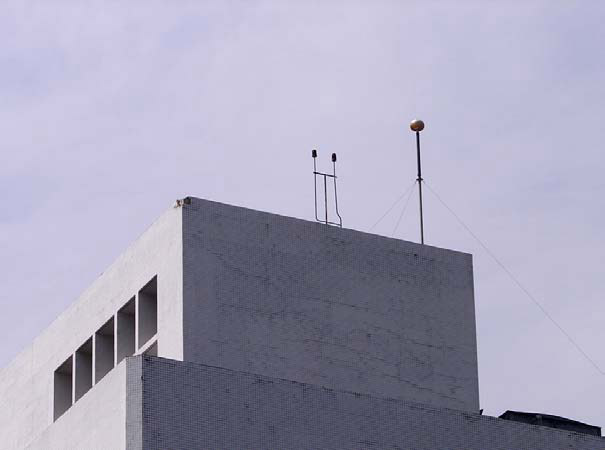
A Very Compelling Evidence for the Failure of the
Early Streamer Emission Technology & Standard.
By Z. A. Hartono & I Robiah
September 2010
E-mail: zahartono@ieee.org
Summary
In May 2009, lightning struck the bell tower of the Saint Pierre and Paul church which
is located in the town of Sigolsheim in eastern France. While this incident may seem trivial
since many places of worship around the world have been struck by lightning throughout
history, it is highly significant due to the size of this bell tower, the climate of the region and
the protection that it was provided.
The lightning had struck and damaged a stone cross which was installed on one end of
the roof while a non-conventional air terminal (i.e. lightning rod) was installed on the other
end. An investigation conducted by the French authorities revealed that lightning had not
struck the early streamer emission (ESE) air terminal which is claimed to provide protection
for the entire church building.
While field studies conducted in Malaysia since 1990 have shown that the various
types of ESE air terminals are incapable of protecting large and tall buildings from being
struck by lightning, this particular incident provides the most compelling evidence that the
ESE air terminal is incapable of protecting even small and low structures as well. The
incident is more significant since the church is located in that part of the world where the
annual thunder day level is very much less than that found in the tropics.
With hundreds of thousands of ESE air terminals allegedly installed around the world,
the users of these air terminals have every reason to be very concerned about the safety of
these buildings and the people that occupy them. This is because the ESE air terminals have
also been proven to be very ineffective in France, the country which has produced the most
ESE air terminals for the world market.
Cover picture:
The town of Sigolsheim with the bell tower protruding above the houses.
1. THE SAINT PIERRE AND PAUL CHURCH AT SIGOLSHEIM
The Saint Pierre and Paul church is a small 12th century church that is located in the town of Sigolsheim, about 300 km east of Paris, near the city of Colmar in eastern France. The annual thunder day (TD) level in this region is about 20. It has a bell tower with a stone cross installed at the front ridge end of the roof. On the rear end of the roof, a Helita Pulsar 25 ESE air terminal had been installed.
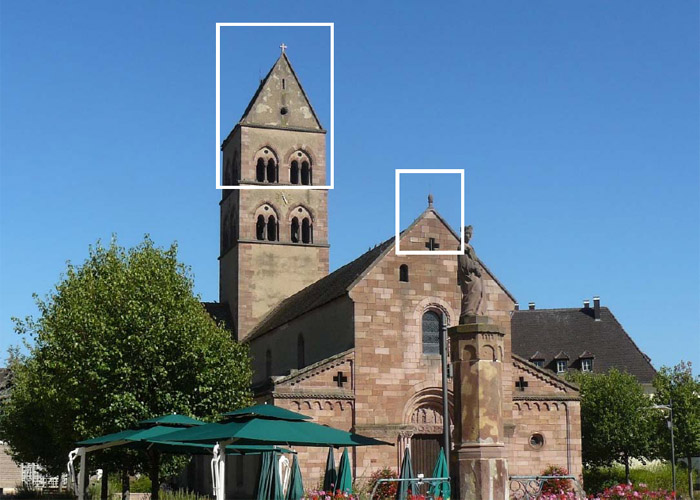
Figure 1: The Saint Pierre and Paul church in Sigolsheim. (Photo: Wikimedia)

Figure 2: Magnified pictures of the church reveals a Helita Pulsar 25 ESE lightning air terminal (left)
and a Franklin air terminal (right) installed on roofs of the bell tower and main hall respectively.
According to the Dernieres Nouvelles D'alsace (DNA) News article dated May 29, 2009, lightning had struck the stone cross of the bell tower at 11.20 pm on May 21, 2009. The damaged cross fell through the roof tiles and subsequently damaged the interior of the bell tower (Figure 3). The article also mentioned that the ESE air terminal had been inspected annually and therefore should have been functioning properly at the time of the incident.
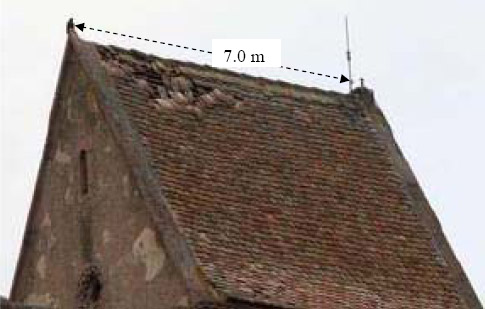
Figure 3: The bell tower of the Saint Pierre and Paul church in Sigolsheim soon after the lightning
strike incident. The Helita Pulsar 25 ESE air terminal is at the right. (Photo: DNA News)
A study was conducted by the Chambre des Experts Agrees, Communaute Europeenne (CEACE) to determine the cause of the lightning strike to the stone cross. The CEACE report no. 8024213399-59 mentioned that the length of the bell tower roof was 7.0 m and the distance between the stone cross and the Helita Pulsar 25 air terminal was less than 6.0 m. The report also mentioned that the tip of the air terminal is 0.9 m higher than the cross and that the air terminal did not exhibit any signs of lightning interception. This suggests that the air terminal had never been struck by lightning before the May 2009 event.
2. REVIEW OF THE SIGOLSHEIM LIGHTNING INCIDENT
The dimensions of the church and bell tower were critical in evaluating the failure of the ESE air terminal. It was estimated that the height of the bell tower is approximately 30 m, which is much lower than the tall office, hotel and apartment buildings in Malaysia that were installed with the ESE air terminals (Figure 4).

Figure 4: Graphic representation of the Saint Pierre and Paul church.
The ESE air terminal was presumably designed to protect the entire church building,
including the stone cross, from being stuck by lightning bolts. However, since the stone cross
had been struck by lightning instead of the ESE air terminal, this suggests that the claimed
protection zone of the air terminal, according to the ESE standard N FC 17-102, was nonexistent.
The original design of the ESE air terminal seemed to be according to the ESE
standard since the manufacturer or contractor did not make any change to it. This can be seen
from the fact that the height of the air terminal was the same after the bell tower had been
repaired and a new stone cross installed (Figure 5).
(Note: In Malaysia, some of the ESE air terminals were re-installed on a taller pole
after the building had been struck and damaged by lightning. The local ESE vendor usually
claimed that the failure was due to an error in the initial air terminal design which was done
by either the project consultant or the installation contractor, and not due to an error in the
ESE standard.
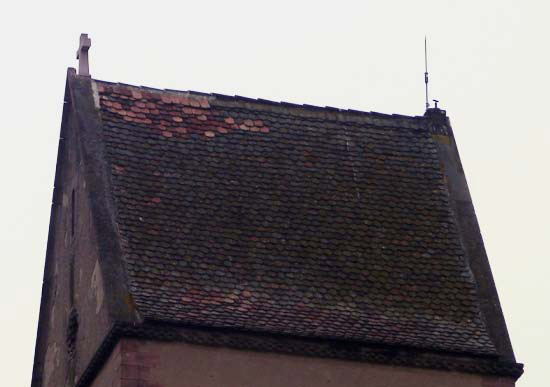
Figure 5: The repaired bell tower of the Saint Pierre and Paul church in Sigolsheim taken a year after
the lightning strike incident. Note the new stone cross and the absence of any change in the height of
the ESE air terminal.
The failure of the ESE air terminal to “attract” the lightning bolt further confirms that
the widely claimed velocity of the early streamer (i.e. 106 ms-1) is grossly incorrect, as
already pointed out by the CIGRE Task Force 33.01.03 in May 1995. However, this incorrect
streamer velocity is still being used to this very day by the ESE manufacturers to calculate the
increased protection zone of the air terminals.
Although the ESE proponents were well aware that they have no evidence to support
their claim for the velocity of the streamer, they still used this value in their lectures to
professional engineers around the world. In December 2009, this incorrect streamer velocity
was reportedly mentioned by an ESE patent holder, Dr. D. Djermoune, at a public forum
which was jointly organised by three French ESE manufacturers in Kuala Lumpur.
3. COMBINED USE OF ESE AND CONVENTIONAL AIR TERMINALS TO
PROTECT FRENCH CHURCHES FROM DIRECT LIGHTNING STRIKES
The position of the blunt tipped Franklin rod on the main hall of the Saint Pierre and Paul church complied with the recommendation of the IEC62305 standard (Figure 6). Had the lightning bolt that struck the cross been displaced further away from the bell tower, it may have bypassed the stone cross and struck the Franklin rod instead. If that had been the case, then the lightning strike event at the church would not have resulted in any damage to the roof and credit for protecting the church might have gone to the ESE air terminal instead if the Franklin rod was not inspected in detail for signs of lightning attachment.
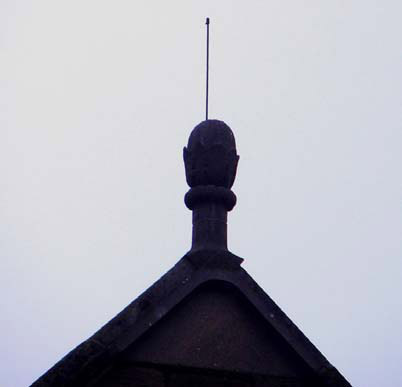
Figure 6: Another view of the correctly positioned Franklin rod on top the roof of the main building.
The practice of using both the ESE and conventional air terminals seems to be common in France since this practice was also observed in some other churches as well (Figures 7 and 8). This suggests that hundreds of other churches in France may have been protected in this way. Therefore, it is possible that there could have been other ESE bypass events, similar to that which occurred in Sigolsheim, which may have gone unnoticed especially when the attachment occurred on a correctly positioned conventional air terminal.
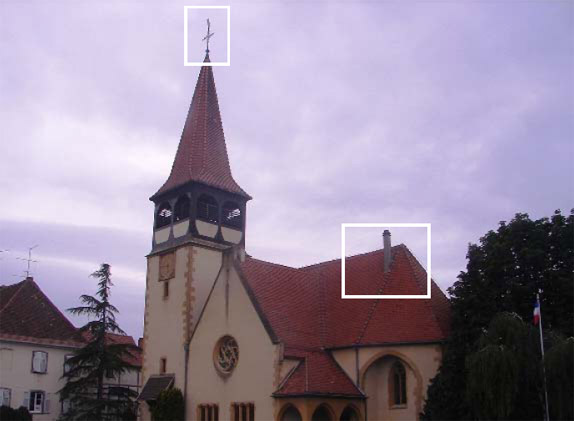
Figure 7: Another French church which has been installed with both the ESE and conventional air terminals.
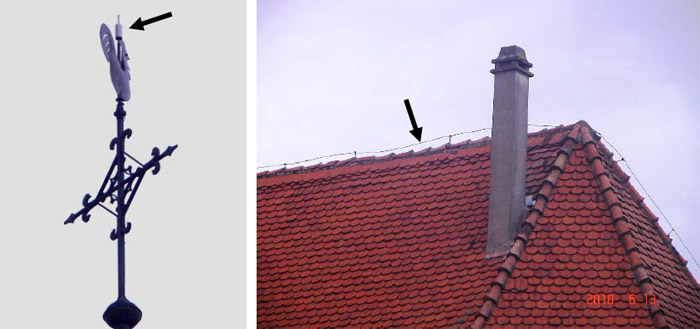
Figure 8: Magnified pictures of the church showing an ESE lightning air terminal (left)
and a conventional air terminal (right) installed on the roof.
4. DISCUSSION AND CONCLUSION
In our previous reports about the failures of the ESE air terminals in Malaysia, the
majority of the affected buildings were higher than 60 m. The observed bypasses on some
ESE air terminal protected buildings below 60 m were mainly attributed to the very high TD
level of 180 to 200 in the country. The same reason is also applied to the observed bypasses
that occurred very close (i.e. <10 m) to the ESE air terminals.
The lightning incident at the Saint Pierre and Paul church in Sigolsheim is the most
compelling evidence obtained so far that the ESE air terminal is incapable of protecting any
building from direct lightning strikes. It is worse than most of the bypasses that have been
observed in Malaysia because
-
a) it occurred in a region of very low TD level (i.e. about 10% of that in Malaysia)
b) it occurred to a low building (only 30 m high)
c) it occurred very close to the ESE air terminal (<6.0 m).
The Sigolsheim incident closely resemble the experiments carried out by the late
Professor Moore where a blunt tipped Franklin rod, a sharp tipped Franklin rod and a French
made ESE air terminal were exposed to lightning strikes in the mountains of New Mexico. In
that experiment, although all air terminals were installed at the same height, the Franklin air
terminal was repeatedly struck by lightning over several years while the other two air
terminals were never struck even once. In the Sigolsheim case, which is at an altitude of
about 300 m above sea level, the stone cross was struck even though it was lower than the
ESE air terminal.
The Sigolsheim incident should raise an alarm to the hundreds of thousands of
building owners worldwide, especially those located in regions with high TD level, who have
been using the ESE air terminals. It is only a matter of time before lightning will strike their
buildings.
This incident is the latest and most compelling evidence that the method of installing
the ESE air terminal, as given in the ESE standard NF C 17-102, is defective and a hazard to
public safety. The ESE lightning protection technology should be immediately replaced or
completely avoided to prevent any minor or major disaster from occurring which can result in
loss of lives.